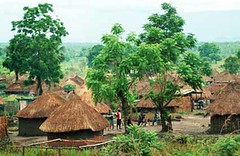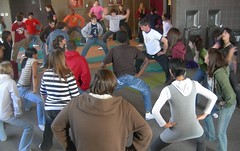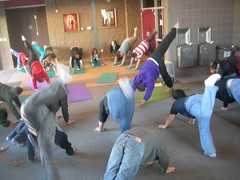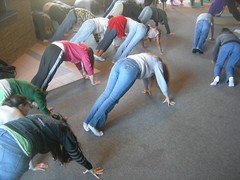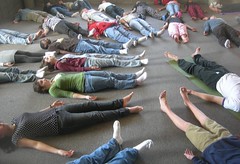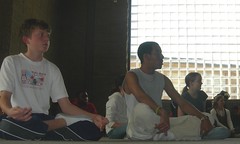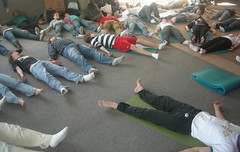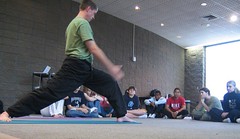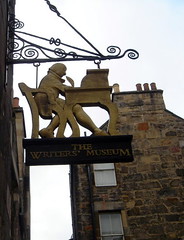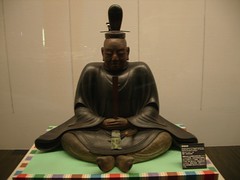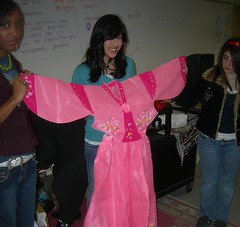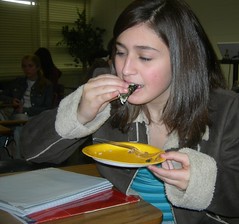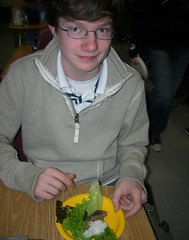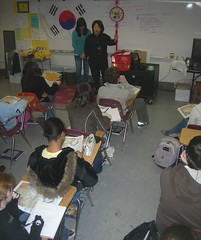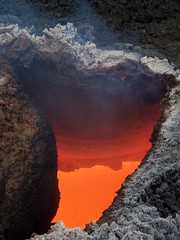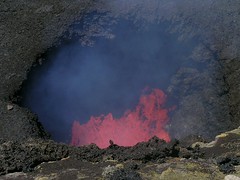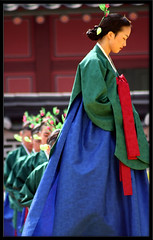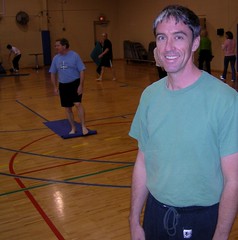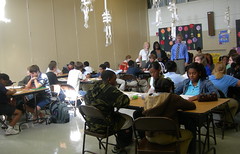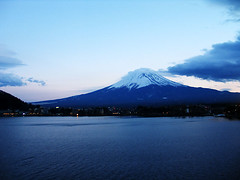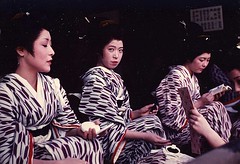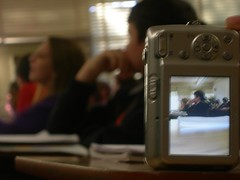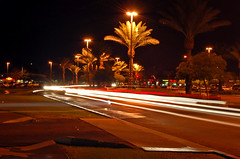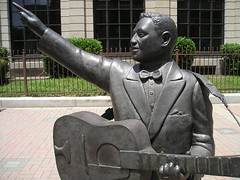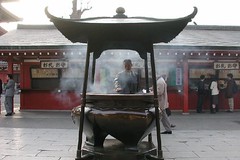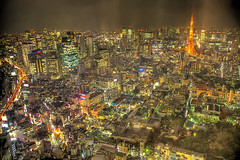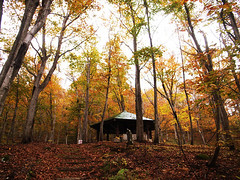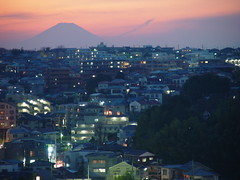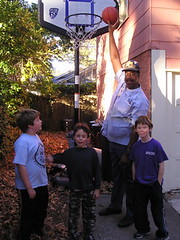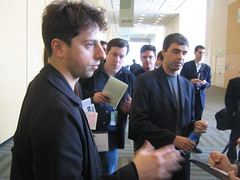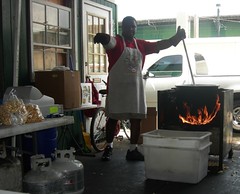Brief reports to be delivered Th & Fri. 10 pts each.
Typed (one page, one illustration) or in Powerpoint (5 images, plus brief script)
documentation: 2 sources
African gold mines
diamond mines / DeBeers Co.
Ashanti tribe
Youssou n ’Dour
Atlantic slave trade Europeans
Atlantic slave trade Africans
King Mansa Musa
King Ibn Battuta
Ethiopian Christianity
Timbuktu / Toumbouctou
W. Af. gold mines
Nubia & the historic Nubians
Egyptians: Pharaoh Ramses II, Ramses the Great
Tut
Nile
Exploration of the Nile
Nigeria / oil
Morocco / crossroads
Liberia
Swahili / Lion King
Sahara
Gates Foundation activities in Africa
AIDS in Africa
Egypt
South Africa
Mt Kilimanjaro
Kenya
rift valley of East Africa
Origin of man in Africa
Cuisine of West Africa, esp. fu fu, cous cous, peanut stew
Tuesday, January 30, 2007
Monday, January 29, 2007
Studying the continent of Africa, continent of Africa: the map
Map of the continent of Africa, continent of Africa, with a focus on East Africa -
Regions of the continent of Africa, continent of Africa:
1. Mediterranean/Arabic Africa (Morocco to Egypt along the Mediterranean)
2. East Africa (Egypt to South Africa along the Indian Ocean)
3. Sub-Saharan Africa (below the Sahara)
4. West Africa (from Morocco to South Africa on the Atlantic coast)
The initial map of the continent of Africa, continent of Africa -
1. Enormous influence on US culture: music (jazz, blues, r & b, gospel, rap), dance (jazz), cuisine (gumbo, fried chicken), vocabulary ( rock n’ roll, jazz, etc), though population is relatively small (about 12% US).
2. Bill & Melinda Gates Foundation: giving billions to disease control & eradication in Africa (AIDS, malaria, etc).
3. Coltan, diamonds & oil: resources needed in the present and future (coltan used in mini-batteries, such as in cell phones).
On the map of the continent (RMQRWA, p. 40):
1. Atlantic
2. Morocco (“How do you see all there is to see in Morocco?” “See it twice.”)
3. Senegal (guitar & dancer)
4. Liberia (African-Americans)
5. Nigeria (oil derrick)
6. South Africa (diamonds, gold)
7. Kenya (“Lion King,” Disney’s Animal Kingdom)
8. Sudan (guns crossed: civil war)
9. Somalia (Al qaeda terrorists)
10. Ethiopia (Christian cross)
11. Egypt (mask of Tutankhamun)
12. Mediterranean
13. Red Sea
14. Indian Ocean
15. Sahara (Arabic: “desert”)
British gold coin of 1600’s, 1700’s: a Guinea (worth 20 or 30 shillings): made from gold from West African mines.
************************
The course of the Nile:
* the Blue Nile rises in Ethiopia.
* the White Nile or Mountain Nile rises in Uganda; the source is lake Victoria.
* the Blue and White Niles join in Khartoum, Sudan.
* flows northward to Egypt; empties into the Med.
Regions of the continent of Africa, continent of Africa:
1. Mediterranean/Arabic Africa (Morocco to Egypt along the Mediterranean)
2. East Africa (Egypt to South Africa along the Indian Ocean)
3. Sub-Saharan Africa (below the Sahara)
4. West Africa (from Morocco to South Africa on the Atlantic coast)
The initial map of the continent of Africa, continent of Africa -
1. Enormous influence on US culture: music (jazz, blues, r & b, gospel, rap), dance (jazz), cuisine (gumbo, fried chicken), vocabulary ( rock n’ roll, jazz, etc), though population is relatively small (about 12% US).
2. Bill & Melinda Gates Foundation: giving billions to disease control & eradication in Africa (AIDS, malaria, etc).
3. Coltan, diamonds & oil: resources needed in the present and future (coltan used in mini-batteries, such as in cell phones).
On the map of the continent (RMQRWA, p. 40):
1. Atlantic
2. Morocco (“How do you see all there is to see in Morocco?” “See it twice.”)
3. Senegal (guitar & dancer)
4. Liberia (African-Americans)
5. Nigeria (oil derrick)
6. South Africa (diamonds, gold)
7. Kenya (“Lion King,” Disney’s Animal Kingdom)
8. Sudan (guns crossed: civil war)
9. Somalia (Al qaeda terrorists)
10. Ethiopia (Christian cross)
11. Egypt (mask of Tutankhamun)
12. Mediterranean
13. Red Sea
14. Indian Ocean
15. Sahara (Arabic: “desert”)
British gold coin of 1600’s, 1700’s: a Guinea (worth 20 or 30 shillings): made from gold from West African mines.
************************
The course of the Nile:
* the Blue Nile rises in Ethiopia.
* the White Nile or Mountain Nile rises in Uganda; the source is lake Victoria.
* the Blue and White Niles join in Khartoum, Sudan.
* flows northward to Egypt; empties into the Med.
A primer on Yoga
Intro to Yoga / cmhs / Trudeau
notes from wikipedia.org
1. Americans learn Hatha Yoga, one of the 6 different types of yoga recognized by the people of India.
2. Yoga represents a holistic approach to health. It addressing the whole person (rather than the parts, as in much of Western medicine).
3. The postures or positions of Hatha Yoga are called asanas. Ex: tadasana, the mountain pose.
4. A series of asanas is called a vinyasa. An example is the series called the Sun Salutations, or Surya Namaskar.
5. Pranayama is essential to effective exercise. It has to do with the diaphragm rather than the typical large muscles. Pranamaya is all about deep inhalation & exhalations, or breath control.
6. Among the many conditions that may be ameliorated by
the practice of yoga: hypertension. That condition, endemic to Louisiana, is better known as ___ __ ___ .
7. Yoga may be used to offset long-lasting and unbroken bouts of pain, a condition known as ___ pain.
8. The practice of yoga has been ongoing over a period of __ thousand years.
9. Qi, or Chi, is thought to be enhanced through the practice of yoga. Chi is the east Asian word for your __ __.
10. Hatha Yoga has a distinct connection with Buddhist thought. T / F
11. The word “yoga” comes from one of the world’s most ancient languages: ___ .
12. “Yoga” refers to harnessing energy or making a union between man and the divine. A cognate for yoga in English is seen in the illustration of man, cart and oxen. Yoga seems and sounds like the ___ round the oxen’s shoulders and neck.
13. List 3 additional health issues that might be alleviated by the practice of yoga: stress, heart disease, asthma, back problems, insomnia.
14. Yoga is commonplace in the American upper middle class. T / F
15. Yoga instructors - sometimes called gurus in India - often give out small candies at the end of class to indicate which practitioners performed the best. T / F
16. Today yoga is still considered alternative medicine by many Americans. Soon we expect it will be thought of as ____ medical practice.
17. A yogini is the traditional term for a yogi of which gender?
18. The classic position for relaxation and correct breathing, or pranayama, is a cross-legged, seated position named for a famous flower: the ___ position.
19. The Sanskrit character for “om,” the holy syllable of Hinduism, is shaped like the Western numeral __ .
20. A word or phrase which, repeated, will aid one’s meditational focus and relaxation is called a a) mantra
b) karma c) shiva d) dharma.
21. A guru is a master or teacher. A sadhu, or fakir, or yogi, indicates mastery of ___ matters.
22. “The divine in me says hello to the divine in you:”
the classic greeting in Hindi, or ___ .
notes from wikipedia.org
1. Americans learn Hatha Yoga, one of the 6 different types of yoga recognized by the people of India.
2. Yoga represents a holistic approach to health. It addressing the whole person (rather than the parts, as in much of Western medicine).
3. The postures or positions of Hatha Yoga are called asanas. Ex: tadasana, the mountain pose.
4. A series of asanas is called a vinyasa. An example is the series called the Sun Salutations, or Surya Namaskar.
5. Pranayama is essential to effective exercise. It has to do with the diaphragm rather than the typical large muscles. Pranamaya is all about deep inhalation & exhalations, or breath control.
6. Among the many conditions that may be ameliorated by
the practice of yoga: hypertension. That condition, endemic to Louisiana, is better known as ___ __ ___ .
7. Yoga may be used to offset long-lasting and unbroken bouts of pain, a condition known as ___ pain.
8. The practice of yoga has been ongoing over a period of __ thousand years.
9. Qi, or Chi, is thought to be enhanced through the practice of yoga. Chi is the east Asian word for your __ __.
10. Hatha Yoga has a distinct connection with Buddhist thought. T / F
11. The word “yoga” comes from one of the world’s most ancient languages: ___ .
12. “Yoga” refers to harnessing energy or making a union between man and the divine. A cognate for yoga in English is seen in the illustration of man, cart and oxen. Yoga seems and sounds like the ___ round the oxen’s shoulders and neck.
13. List 3 additional health issues that might be alleviated by the practice of yoga: stress, heart disease, asthma, back problems, insomnia.
14. Yoga is commonplace in the American upper middle class. T / F
15. Yoga instructors - sometimes called gurus in India - often give out small candies at the end of class to indicate which practitioners performed the best. T / F
16. Today yoga is still considered alternative medicine by many Americans. Soon we expect it will be thought of as ____ medical practice.
17. A yogini is the traditional term for a yogi of which gender?
18. The classic position for relaxation and correct breathing, or pranayama, is a cross-legged, seated position named for a famous flower: the ___ position.
19. The Sanskrit character for “om,” the holy syllable of Hinduism, is shaped like the Western numeral __ .
20. A word or phrase which, repeated, will aid one’s meditational focus and relaxation is called a a) mantra
b) karma c) shiva d) dharma.
21. A guru is a master or teacher. A sadhu, or fakir, or yogi, indicates mastery of ___ matters.
22. “The divine in me says hello to the divine in you:”
the classic greeting in Hindi, or ___ .
The African continent: a documentary called The Lost Boys of Sudan
The current project is to summarize the story of the Lost Boys of Sudan. Their village of Yirol is near Bor, along the Mountain Nile, in the extreme south.
Dinka dance / Southern Sudan
Lost Boys of Sudan (LBOS) is a documentary that provokes several culminating activities. One takes place Thursday; it is the comparison essay on Peter and Santino. Another one is to make a summary powerpoint presentation on the immigrants' story. Wednesday we began planning the summary by writing notes for a storyboard.
What has happened to Peter and Santino subsequent to the film?
There is much to learn and enjoy at the web site of the documentary Lost Boys of Sudan. The site is LostBoysFilm.com.
Understanding Sudan- add demograhics to village images
Understanding Sudan- add demograhics to village images
Originally uploaded by trudeau.
Terminology for the essay to be written in class Thursday:
demograhic info
bureaucracy
evaluate
Dinka
Nilotic
United Nations
refugee / asylum
Peter Dut
Santino Chuor
South Sudan
INS: Immigration and Naturalization Service
ululation
fu fu
Eastern Africa
Swahili
Acacia tree
English / British colony
Arabic / Muslims
mnemonic
Nairobi, Kenya
documentation
indigenous
Houston: 4.5 M
Kansas City: 2 M
posted by trudeau at 5:09 AM | 0 comments links to this post
Sunday, August 21, 2005
From East Africa to Houston and Kansas City
DinkaDANCE_jpg
Originally uploaded by trudeau.
Dinka tribesmen Peter Nyarol and Santino Chuor are the subjects of Lost Boys of Sudan. Thursday in geo class students will compose a comparison essay on either a) Peter and Santino and how they reacted to their immigrant challenges, or b) Houston and Kansas City from the point of view of an African immigrant.
The rubric (required elements) that will guide essay writing in geo class includes:
1. Colorful opening. There are 3 recommended ways to create an interest-getting opening: a) use a quote b) ask a question c) write with vivid description.
2. Blend the topics continually in the paper. Do not write a block of material about one topic and then write a separate block about the other topic. Integrate the topics as you offer insight and evidence.
3) Use comparison terms:
* different from,
* the same,
* Both,
* similar to,
* Neither, ... nor,
* like X is (adjective),
* ... than X is (adverb) than.
* both, ...
* either...or
* likewise
* similarly
* although,
* but neither...
* nor
* however
* on the other hand
4. Specific examples must be used to support generalities. An example: generality - The Incredibles was an awesome movie. specific - The Incredibles appealed to me because the characters (especially the mom and the teen sister) were believeable. They sounded like people I know.
5. Grammar counts.
6. Spelling, too. When in doubt, see a dictionary or ask me.
7. Punctuation is paramount. Again, ask me or your Grammar Check software.
8. Include documentation via "according to ...". This means include your source - from World Book to your little brother - in the body of your writing. Usually you place it at the end of the first or second sentence, says Grammar For Today.
9. Write a snappy title. Ways to make a title fun are to tweak a song or movie title or use alliteration. Also, write an explanatory subtitle. Example: "Dinkas are Incredibles;" "Many refugees from the Sudanese Dinka tribe have moved from poverty in east Africa to comfort in the US."
Finally, please don't put quotation marks around your title - unless you are quoting someone.
Sunday, January 28, 2007
Yoga Day instructor: Ken Womack
Thanks to Ken Womack, a fellow so generous he turned down my offer of an expense subsidy because he has made a commitment to give service hours to his community. I still say we should give him some small gifts. Plus thank you notes from each student. We shall discuss it in class.
Here's a yoga site I like.
Here's a yoga site I like.
Thursday, January 25, 2007
Yoga Day is Fri, jan 26; guest instructor is Ken Womack
Ken Womack is a yoga instructor for the YMCA and also a serious practitioner of the martial arts. Thus he brings quite a range of background to our geo class.
Parents: you are welcome to our sessions, too. Meet us in the PAC lobby any hour except 5th.
Parents: you are welcome to our sessions, too. Meet us in the PAC lobby any hour except 5th.
Wednesday, January 24, 2007
Platal Tectonica, geologics, crustal collisions
Plate tectonics, reading comprehension & The Ring of Fire
World Geography, Prentice-Hall: pp. 40 - 45
1. Geologists believe the history of the earth spans some ___ years.
2. Nickel and iron soup: components of the earth’s __.
3. A thick pudding of iron and nickel: the __ __.
4. If you drape a beautifully decorated cloth over the shoulders of a priest, it is called a mantle. Explain how the earth’s geologic term, “mantle,” parallels this meaning. (one sentence)
5. The earth’s crust is made of flour, water, salt and rock. T / F
6. The crust varies in flavor. The seaweed crust is some __ miles thick. The baked crust is often about __ miles thick.
7. Why do you and I not agree with the text in regards the surface of the planet? We believe the earth is covered with trees, not seawater. Why do we believe this (go with me on this one, ok?) to be true? (one sentence)
8. Meantime, according to your text, what percentage of earth is not covered with water?
9. The largest continental mass?
10. How do you spell the “difference in elevation” on the land’s surface?
11. It’s called magma sometimes and lava at other times. What is it and why the dif?
12. Would you rather live near a fault or a fold in the earth’s crust?
Explain a fold.
13. The earth’s crust and the upper layer of mantle makes up the ___. “Lith” refers to rock and “sphere” refers to the ______.
14. Do the earth’s plates move Toward each other or Apart from each other?
15. Write down the etymology of the term Pangaea.
16. Would you call the 180 million years since continental drift began an extremely ancient earth phenomenon or relatively recent one? Explain by giving one additional measurement.
17. Explain the use of fossil evidence in the continental drift theory.
(one sentence)
18. A split in the earth’s crust is called a __.
19. Scientists believe in the theory of seafloor spreading. T / F
20. How do the earth’s crustal plates get the power to move?
21. If thermal energy is involved, what’s the source of the tectonic heat?
22. Sketch the platal dance that occurs when continental crust meets the oceanic crust.
23. In the case of the Andes Mtns., what’s ironic about subduction?
24. When continental plates collide, what is the result?
25. Which plates created the Himalayas?
Locations that are part of the Pacific Ring of Fire region, Y (yes) or N (no):
26. Philippines
27. Hawaii
28. Mexico
29. Chile
30. Bering Strait
31. Mt Vesuvius
32. Tasmania
33. Alaska
34. Indonesia
35. China
36. Ecuador
37. The Nazca Plate and the South American plate: a) subduction b) spreading
38. The San Andreas zone: a) converging b) faulting.
39. “Hot spots” in the mantle are associated with a) archipelagos
b) geysers c) mitosis.
Answers:
1. Earth span: 4.6 billion years. Did you wonder how this estimate was generated?
2. Nickel & iron soup: outer core. What’s the composition of nickel?
Why nickel & iron?
3. Nickel & iron pudding: inner core.
4. The mantle is a robe draped over the core.
5. True. Why not?
6. seaweed: 5 miles “down.” baked crust: 20 miles deep. Surprised?
7. Local observation: when we observe local terrain it is tree rich. No seawater round here, yet.
8. About 30% not watery.
9. Eurasia is largest. It’s bigger than Texas.
10. r-e-l-i-e-f: the description of the upper and lower parts of the terrain.
11. Magma, lava: molten rock inside or outside the crust.
12. Neither. A fold is when a stratum of rock is bent or curved by huge force. The Appalachians are folds. There are upfolds (assoc w petroleum & coal deposits), or domes, and downfolds, or depressions.
13. lithosphere: crust & mantle. globe.
14. Both.
15. pan, “across” or “all,” and gaia, “earth.”
16. Recent compared to 4.6 billiob years of history.
17. Fossils are the same in separated plates, proving a historic closeness.
18. split: rift.
19. True, re seafloor spreading. Proven by photos taken by remote-controlled submarines.
20. Thermal energy or convection.
21. Thermal: decaying organic matter.
22. Subduction: coastal crust folds under the continental.
23. Subduction assoc with the opposite: mountain formation.
24. Plates collide: converging or faulting. Violence.
25. Indo-Australian plate vs. the Eurasian plate: Himalayas.
26. Philippines: Y
27. Hawaii: Y
28. Mexico: Y
29. Chile: Y
30. Bering Strait: Y
31. Vesuvius: N
32. Tasmania: N
33. Alaska: Y
34. Indonesia: Y
35. China: Y
36. Ecuador: Y
37. Nazca plate & S. Am. plate: subduction
38. San Andreas: faulting
39. Hot spots: a) archipelagos b) geysers and c) mitosis.
40. Most critical hydrologic issue of the ArkLaTex? hydrology, or water supply
** ** ** **
Skits on the Ring of Fire (3 mins max presentation)
Objective: write a skit that will explain the overall nature of the Pacific Ring of Volcanoes and tectonic plates. Be explanatory and imaginative. You may parody a movie, song, TV commercial, etc.
- Use the Ring of Fire map on the board in the script.
- Skit-writing groups based on each row.
- Script material to be recited will be written on index cards. Each person must speak at least twice.
- Please integrate 5 key words & explanations (ex: crust, rinf of fire, etc) from the vocabulary list. Make sure they are defined, even if informally.
- One person may make a graphic - a poster - to announce the skit.
- 8 pts score: 4 for script quality; 4 for performance.
Monday, January 22, 2007
Writers' Workshop: after school skill-building & point-building in social studies; every Tuesday til 4 pm
Writers' Workshop is my way of offering hands-on instruction to students who want more from CMHS.
Every Tuesday after school (I'll announce exceptions a day in advance) I will meet with students individually to guide a short piece of social studies writing.
Students will win bonus points and demonstrate growth in skills. I will keep a record of students who report to these small group sessions. They can be a step toward success.
I'll stay til at least 4 pm. Most student work will be scored before leaving the session.
Students want challenges and want more depth in their instruction. This is one small effort toward giving you what you truly desire from your schooling.
Every Tuesday after school (I'll announce exceptions a day in advance) I will meet with students individually to guide a short piece of social studies writing.
Students will win bonus points and demonstrate growth in skills. I will keep a record of students who report to these small group sessions. They can be a step toward success.
I'll stay til at least 4 pm. Most student work will be scored before leaving the session.
Students want challenges and want more depth in their instruction. This is one small effort toward giving you what you truly desire from your schooling.
Tokugawa Ieyasu: over 150 years of Isolationism for Japan
Textbook notes on "Isolationism and Imperialism," pp. 649 - 654.
Has the US ever had an isolationist period? Yes. The post-WWI period - through the Great Depression and into the pre-WWII period - was isolationist.
Quiz Tuesday on Ring of Fire notes.
Has the US ever had an isolationist period? Yes. The post-WWI period - through the Great Depression and into the pre-WWII period - was isolationist.
Quiz Tuesday on Ring of Fire notes.
Sunday, January 21, 2007
Edward B Smith eating Bulgogi, the national dish of Korea
Thanks to Mrs. Ponya Beresko for a delightful presentation.
The Shogun Tokugawa cut off Japan from the outside world; the isolation lasted some 150 years
Isolationism
Can you imagine living on an isolated island kingdom and being cut off from the outside? Japan lived that way in the 1700's.
All the first world countries (the UK, United States, etc.) trade in a world economy, says Wikipedia.org. Some will argue that removing oneself from such an economy could be potentially helpful.
The consensus amongst most economists is that such a policy is detrimental, and point to the mercantilism of the pre-industrial era as the classic example. Countries and regions generally enjoy a comparative advantage over others in some area.
Free trade between countries allows each country to do what it does best, and benefit from the products and services that others do best. Protectionism prevents this process, it is argued, making people poorer than they would be otherwise.
On the other hand, non-interventionism generally benefits a country by reducing both military spending (as it is limited to defensive purposes) and the chances of provoking an attack (by not meddling in foreign intrigue.)
Japan -
From 1641 to 1853, the Tokugawa shogunate of Japan enforced a policy which it called sakoku. The policy prohibited foreign contact except with China, Korea, and Netherlands. During this time, the culture of Japan developed in ways mostly free of influence from the outside world and had one of the longest stretches of peace in history; however, in the absence of modernization, Japan eventually fell prey to foreign powers, and the harsh regime of economic and military development that Japan subsequently imposed on itself worked to modernize and militarize Japanese society.
United States non-interventionism -
Following the sacrifices in the World War I, the United States population turned to isolationism during the 1920s, opposing any action by the government that would drag the country into another European war. This isolationist tendency led to the imposition of tariffs, thought to be a significant factor in causing the Great Depression.
American isolationism came to an end during World War II, particularly following the Japanese attack at Pearl Harbor in December of 1941.
Friday, January 19, 2007
Underwater rifts: the Ring of Fire and basic geology; test Tuesday, Jan 23
Open notes quiz on the Ring of Fire material Tuesday.
While this illustration is of a rift valley in East Africa, the rifts of the Ring of Fire are on the Pacific floor.
Add to terms:
* convection
* subduction
* hydrology
Add to Ring of Fire map:
* Mt Fuji
* Mt St Helens
* Mauna Loa
Brief paragraph:
1) What might impinge on our lives from an event in the Ring of Fire region? In other words, what connection is there between Louisiana and the Ring of Fire region?
2) What physical and cultural factors connect the US and its cross-Pacific neighbor, Japan? Does Toyota or Nikon have a place in our discussion? "Spirited Away"? "Dragon Ball Z Cooler's Revenge?"
Independent work:
Research and compare the lives of explorer-author Thor Heyerdahl and archaeologist-author Louis HB Leakey.
While this illustration is of a rift valley in East Africa, the rifts of the Ring of Fire are on the Pacific floor.
Add to terms:
* convection
* subduction
* hydrology
Add to Ring of Fire map:
* Mt Fuji
* Mt St Helens
* Mauna Loa
Brief paragraph:
1) What might impinge on our lives from an event in the Ring of Fire region? In other words, what connection is there between Louisiana and the Ring of Fire region?
2) What physical and cultural factors connect the US and its cross-Pacific neighbor, Japan? Does Toyota or Nikon have a place in our discussion? "Spirited Away"? "Dragon Ball Z Cooler's Revenge?"
Independent work:
Research and compare the lives of explorer-author Thor Heyerdahl and archaeologist-author Louis HB Leakey.
Thursday, January 18, 2007
The Lithosphere and beyond
Terminology to be defined and placed upon a map of the Ring of Fire:
1. geology
2. core
3. mantle
4. crust
5. lithosphere
6. plate tectonics
7. Pangaea
8. rift valley
9. convection
10. San Andreas fault
See pp. 40 - 45 in World Geography, Prentice Hall. Or a dictionary or encyclopedia.
In what nation is the volcanic Mt. Etna?
1. geology
2. core
3. mantle
4. crust
5. lithosphere
6. plate tectonics
7. Pangaea
8. rift valley
9. convection
10. San Andreas fault
See pp. 40 - 45 in World Geography, Prentice Hall. Or a dictionary or encyclopedia.
In what nation is the volcanic Mt. Etna?
The Ring of Fire tectonic map
Map the the region of tectonic activity known as the Ring of Fire.
Add color and designations for nations, bodies of water and famous peaks.
See World Geography - Prentice Hall - on p. 43.
Add color and designations for nations, bodies of water and famous peaks.
See World Geography - Prentice Hall - on p. 43.
Tuesday, January 16, 2007
Rosa Parks & Martin Luther King, Jr, in the civil rights movement.
Sample questions for the open notes quiz on Wed, Jan 17. That quiz will also cover notes on Japan.
1. MLK birthplace: a) Atlanta b) Memphis c) Charleston
2. PhD was awarded after study at a) Harvard b) Boston U. c) Johns Hopkins U.
3. First pastorate: a) Selma b) Jacksonville c) Montgomery.
4. First leadership of a boycott: a) Selma b) Jacksonville c) Montgomery.
5. Rosa Parks bus incident: a) 1955 b) 1958 c) 1961.
6. Outcome of year-long Alabama bus boycott was a ruling against discriminatory practices in public transportation: a) legislation by Congress b) Supreme Court decision.
7. King’s plan of non-violence was derived from the teachings and practice of a) TE Lawrence b) MK Gandhi c) Abraham Lincoln.
8. King also adopted Gandhi’s style of quiet and civilized rebellion. It was called a) non-violent protest b) civil disobedience c) passive resistance.
9. King was head of the a) SNCC b) SCLC c) NAACP.
10. The FBI was able to quietly help protect MLK and give him aid when needed. T / F
11. Head of the FBI for some 49 years: a) Robert kennedy
b) J Edgar Hoover c) Joseph McCarthy d) Henry Truman.
12. Alfred Nobel won fame and fortune with the a) TNT b) LSD c) LCD d) ICBM.
13. Name the president who did not side with King until the March on Washington showed that MLK could draw together 250,000 people of all backgrounds. a) LBJ
b) JFK c) Richard Nixon.
14. The “I have a Dream” speech was delivered in a) 1960 b) 1963 c) 1965.
15. King was murdered at age a) 36 b) 39 c) 41.
16. The Supreme Court decision most important to King’s work was one that ruled against one type of segregation:
a) jobs b) public transportation c) schools d) housing.
17. Unfair discrimination in housing and jobs was prohibited by the a) Civil Rights Act of 1964 b) Voting Rights Act of 1965.
18. Congressional bills against racist practice in 1964 and 1965 were pushed by President a) Kennedy b) Nixon
c) Johnson.
Monday, January 15, 2007
MLK, Jr: Atlanta, Boston, Montgomery, Delhi, Albany, Birmingham, St Augustine, Selma, Washington, Chicago, Memphis
Martin Luther King, Jr. bio from wikipedia.org -
January 15, 1929 in Atlanta, Georgia. According to his father, the attending physician mistakenly entered "Michael" on Martin Jr.'s birth certificate.[3]
King entered Morehouse College at the age of fifteen, as he skipped his ninth and twelfth high school grades without formally graduating. In 1948 he graduated from Morehouse with a B.A. degree in sociology, and enrolled in Crozer Theological Seminary in Chester, Pennsylvania. In 1951 King began doctoral studies in Systematic Theology at Boston University, and received his Ph.D. in 1955.[4]
In 1953, at the age of twenty-four, King became pastor of the Dexter Avenue Baptist Church, in Montgomery, Alabama.
On December 1, 1955, Rosa Parks was arrested for refusing to comply with the Jim Crow laws that required her to give up her seat to a white man. The Montgomery Bus Boycott, led by King, soon followed.
The boycott lasted for 382 days, the situation becoming so tense that King's house was bombed. King was arrested during this campaign, which ended with a United States Supreme Court decision outlawing racial segregation on all public transport.
King was instrumental in the founding of the Southern Christian Leadership Conference (SCLC) in 1957, a group created to harness the moral authority and organizing power of black churches to conduct non-violent protests in the service of civil rights reform.
King was an adherent of the philosophies of nonviolent civil disobedience used successfully in India by Mahatma Gandhi, and he applied this philosophy to the protests organized by the SCLC.
The FBI began wiretapping King in 1961, fearing that communists were trying to infiltrate the Civil Rights Movement, but when no such evidence emerged, the bureau used the incidental details caught on tape over six years in attempts to force King out of the preeminent leadership position.
King organized and led marches for blacks' right to vote, desegregation, labor rights and other basic civil rights. Most of these rights were successfully enacted into United States law with the passage of the Civil Rights Act of 1964 and the Voting Rights Act of 1965.
King and the SCLC applied the principles of nonviolent protest with great success by strategically choosing the method of protest and the places in which protests were carried out in often dramatic stand-offs with segregationist authorities. Sometimes these confrontations turned violent. King and the SCLC were instrumental in the unsuccessful protest movement in
Albany, in 1961 and 1962,
Birmingham protests in the summer of 1963;
protest in St. Augustine, Florida, in 1964.
Selma, Alabama, in December 1964, where SNCC had been working on voter registration for a number of months.[6]
King is perhaps most famous for his "I Have a Dream" speech, given in front of the Lincoln Memorial during the 1963 March on Washington for Jobs and Freedom.
More than a quarter of a million people of diverse ethnicities attended the event, sprawling from the steps of the Lincoln Memorial onto the National Mall and around the reflecting pool. At the time, it was the largest gathering of protesters in Washington's history. King's I Have a Dream speech electrified the crowd. It is regarded, along with Abraham Lincoln's Gettysburg Address, as one of the finest speeches in the history of American oratory. President Kennedy, himself opposed to the march, met King afterwards with enthusiasm - repeating King's line back to him; "I have a dream", while nodding with approval.
On October 14, 1964, King became the youngest recipient of the Nobel Peace Prize, which was awarded to him for leading non-violent resistance to end racial prejudice in the United States.
March from Selma to the state capital of Montgomery, March 25, 1965: the first attempt to march on March 7 was aborted due to mob and police violence against the demonstrators. This day has since become known as Bloody Sunday. Bloody Sunday was a major turning point in the effort to gain public support for the Civil Rights Movement, the clearest demonstration up to that time of the dramatic potential of King's nonviolence strategy.
Filmed footage of the police brutality against the protesters was broadcast extensively, and aroused national public outrage.
In 1966, after several successes in the South, King and other people in the civil rights organizations tried to spread the movement to the North, with Chicago as its first target. King and Ralph Abernathy, both middle class folk, moved into Chicago's slums as an educational experience and to demonstrate their support and empathy for the poor.
When King and his allies returned to the south, they left Jesse Jackson, a seminary student who had previously joined the movement in the south, in charge of their organization. Jackson displayed oratorical skill, and organized the first successful boycotts against chain stores. One such campaign targeted A&P Stores which refused to hire blacks as clerks; the campaign was so effective that it laid the groundwork for the equal opportunity programs begun in the 1970s.
Starting in 1965, King began to express doubts about the United States' role in the Vietnam War. In an April 4, 1967 appearance at the New York City Riverside Church -- exactly one year before his death – King delivered Beyond Vietnam: A Time to Break Silence. In the speech he spoke strongly against the U.S.'s role in the war, insisting that the U.S. was in Vietnam "to occupy it as an American colony" and calling the US government "the greatest purveyor of violence in the world today." But he also argued that the country needed larger and broader moral changes:
The 1968 campaign culminated in a march on Washington, D.C. demanding economic aid to the poorest communities of the United States. He crisscrossed the country to assemble "a multiracial army of the poor" that would descend on Washington -- engaging in nonviolent civil disobedience at the Capitol, if need be -- until Congress enacted a poor people's bill of rights.
In late March, 1968, Dr. King went to Memphis, Tennessee in support of the black garbage workers of AFSCME Local 1733, who had been on strike since March 12 for higher wages and better treatment: for example, African American workers, paid $1.70 per hour, were not paid when sent home because of inclement weather (unlike white workers).[14][15][16]
On April 3, Dr. King returned to Memphis and addressed a rally, delivering his "I've been to the Mountaintop" address.
King was assassinated at 6:01 p.m. April 4, 1968, on the balcony of the Lorraine Motel in Memphis, Tennessee.
Friday, January 12, 2007
North & South Korea: heavy contrasts
The symbols of the 2 Koreas:
- Nuclear warheads vs. Samsung & Hyundai
- communist dictatorship vs. free market democracy
- near-famine levels of poverty vs. one of the highest standards of living in Asia.
- China vs. the US
Cities:
Pyongyang
Seoul
Japan
China
Russia
Sea of Japan
Yellow Sea
US Korean War, 1950 - 1953
"the forgotten war"
Gen. McArthur vs. Pres. Truman
The China factor: don't wake the sleeping giant.
M*A*S*H, the sitcom.
bugogi
kim chee
Sports, acc to wikipedia.org
Taekwondo, a popular martial art, originated in Korea. Taekwondo means the way of the foot, the way of the fist, and the way of life. It became standard military training in South Korea, and in 1961 the rules were standardized and taekwondo became an official Olympic sport in 2000. Taekwondo in the military is a integral part in the Korean land forces.Other Korean martial arts include hapkido and taekkyeon.
Baseball was first introduced to Korea in 1905 by an American missionary named Phillip Gillette and has since become the most popular spectator sport in South Korea.[31] The first South Korean professional sports league was the Korea Baseball Association, established in 1982. During the 2006 World Baseball Classic, South Korea reached the final four before losing to Japan. Prior to that final match, the South Korean team was the only undefeated team, and had beaten Japan twice and the United States once.
Other popular sports in South Korea include basketball, football, golf, tennis and ice hockey. Women's golf is especially strong, with over thirty South Koreans playing on the world's leading women's tour, the U.S. LPGA Tour, including stars such as future Hall of Famer Se Ri Pak.
South Korea is also the cradle of the e-sports (electronic sports) world. Home to KesPA, e-sports has become popular in Korea with two broadcasting stations broadcasting live matches on television. South Korea has been regarded the birthplace of e-sports and also the future of e-sports. The Koreans are widely known for their e-sports, and especially in the WCG, World Cyber Games.
The real time strategy computer game, Starcraft, is extremely popular in South Korea. Live matches are broadcast on television and large sums of money are awarded to winners of various tournaments.
- Nuclear warheads vs. Samsung & Hyundai
- communist dictatorship vs. free market democracy
- near-famine levels of poverty vs. one of the highest standards of living in Asia.
- China vs. the US
Cities:
Pyongyang
Seoul
Japan
China
Russia
Sea of Japan
Yellow Sea
US Korean War, 1950 - 1953
"the forgotten war"
Gen. McArthur vs. Pres. Truman
The China factor: don't wake the sleeping giant.
M*A*S*H, the sitcom.
bugogi
kim chee
Sports, acc to wikipedia.org
Taekwondo, a popular martial art, originated in Korea. Taekwondo means the way of the foot, the way of the fist, and the way of life. It became standard military training in South Korea, and in 1961 the rules were standardized and taekwondo became an official Olympic sport in 2000. Taekwondo in the military is a integral part in the Korean land forces.Other Korean martial arts include hapkido and taekkyeon.
Baseball was first introduced to Korea in 1905 by an American missionary named Phillip Gillette and has since become the most popular spectator sport in South Korea.[31] The first South Korean professional sports league was the Korea Baseball Association, established in 1982. During the 2006 World Baseball Classic, South Korea reached the final four before losing to Japan. Prior to that final match, the South Korean team was the only undefeated team, and had beaten Japan twice and the United States once.
Other popular sports in South Korea include basketball, football, golf, tennis and ice hockey. Women's golf is especially strong, with over thirty South Koreans playing on the world's leading women's tour, the U.S. LPGA Tour, including stars such as future Hall of Famer Se Ri Pak.
South Korea is also the cradle of the e-sports (electronic sports) world. Home to KesPA, e-sports has become popular in Korea with two broadcasting stations broadcasting live matches on television. South Korea has been regarded the birthplace of e-sports and also the future of e-sports. The Koreans are widely known for their e-sports, and especially in the WCG, World Cyber Games.
The real time strategy computer game, Starcraft, is extremely popular in South Korea. Live matches are broadcast on television and large sums of money are awarded to winners of various tournaments.
January is National Yoga Practice Month; January 28 is National Yoga Day
"Tell you what," said YMCA yoga instructor Ken Womack," I'll come to Caddo Magnet to lead your classes in yoga on National Yoga Day."
That auspicious day is Jan 28. Thus we will have Yoga Day in the PAC lobby on Fri, Jan 26.
Those who want to explore the flexibility, strength and stress relief associated with Yoga before the end of the month shouldc all the Y or your family fitness center for a schedule of classes.
Parents are welcome at NatYogaDay.
That auspicious day is Jan 28. Thus we will have Yoga Day in the PAC lobby on Fri, Jan 26.
Those who want to explore the flexibility, strength and stress relief associated with Yoga before the end of the month shouldc all the Y or your family fitness center for a schedule of classes.
Parents are welcome at NatYogaDay.
Thursday, January 11, 2007
Open notes, multiple choice quiz on Japan: Wed, Jan 17
Class notes and web site notes - and atlas - will be the relevant material for an open notes quiz on Japan on Wed, Jan 17.
Questions may also cover your Japan-US comparison review paper.
Samples:
Which nation has greater ethnic diversity? a) Japan b) US.
Which country has more literate people? a) Japan b) USA.
Questions may also cover your Japan-US comparison review paper.
Samples:
Which nation has greater ethnic diversity? a) Japan b) US.
Which country has more literate people? a) Japan b) USA.
What to do on Mon, Jan 15: volunteer at S'pt Green
Mayor Cedric Glover has asked the citizens of Spt to take some time to perform volunteer work on Mon, Jan 15. The Martin Luther King, Jr, holiday can be "A day ON, not a day off," says CMHS student Hope McFarland.
One place to offer volunteer labor is Spt Green. If you report to the 3625 Southern Ave office (a bit south of Mall St Vincent) by 9 am you can be part of a volunteer crew, says McFarland.
This idea has enormous potential. If you offer your time you will probably meet new people and be able to see the city through different eyes. It will be somewhat of a sacrifice, too. And one more thing I feel I can guarantee: it will Not be boring.
One place to offer volunteer labor is Spt Green. If you report to the 3625 Southern Ave office (a bit south of Mall St Vincent) by 9 am you can be part of a volunteer crew, says McFarland.
This idea has enormous potential. If you offer your time you will probably meet new people and be able to see the city through different eyes. It will be somewhat of a sacrifice, too. And one more thing I feel I can guarantee: it will Not be boring.
Wednesday, January 10, 2007
Mt.Fuji(Kawaguchiko view)
Mt. Fuji stands at 12,388 ft/3,776 m high and is surrounded by five lakes: Lake Kawaguchi, Lake Yamanaka, Lake Sai, Lake Motosu and Lake Shoji. They, and nearby Lake Ashi, provide excellent views of the mountain. It is part of the Fuji-Hakone-Izu National Park. It is also active and is a composite volcano, according to wikipedia.org.
An estimated 200,000 people climb Mount Fuji every year, 30% of whom are foreigners. The ascent can take anywhere between 3 and 7 hours while the descent can take from 2 to 5 hours. The hike is divided into ten stations and there are paved roads up to the fifth station, which is about 2300 meters above sea level. Huts at this station are not usually manned at night for nighttime climbers. The sheer number of climbers each year has created a litter problem on the road to the summit, but this has not decreased the mountain's popularity.
Trivia
Singer Kyu Sakamoto once had bearers carry a grand piano to the summit for a concert.
The Atari and Infiniti logos are both stylized representations of Mount Fuji, though some believe that the Infiniti logo is just a road.
Mount Taranaki or Mount Egmont in New Zealand looks so similar to Mount Fuji from some angles that it has been used as a substitute in films, such as The Last Samurai.
Volcan Osorno in south Chile also has a striking similarity to Mount Fuji.
Before Mt. St. Helens erupted in 1980, it was often called the "Mt Fuji of America."
Mt Fuji and the surrounding area is a frequently utilised battleground in the Godzilla series, most notably in Destroy All Monsters, Godzilla vs The Smog Monster and Godzilla: Final Wars.
Mt. Fuji is a playable level in the PS2 RPG "Shadow Hearts: Covenant", under the name "Immortal Mountain".
In the video game "Soul Calibur III" one of the battlefields is titled "Sacred Mt. Fuji - Lava Bed".
The heel (professional wrestling) manager, Mr. Fuji, is named after the mountain.
An estimated 200,000 people climb Mount Fuji every year, 30% of whom are foreigners. The ascent can take anywhere between 3 and 7 hours while the descent can take from 2 to 5 hours. The hike is divided into ten stations and there are paved roads up to the fifth station, which is about 2300 meters above sea level. Huts at this station are not usually manned at night for nighttime climbers. The sheer number of climbers each year has created a litter problem on the road to the summit, but this has not decreased the mountain's popularity.
Trivia
Singer Kyu Sakamoto once had bearers carry a grand piano to the summit for a concert.
The Atari and Infiniti logos are both stylized representations of Mount Fuji, though some believe that the Infiniti logo is just a road.
Mount Taranaki or Mount Egmont in New Zealand looks so similar to Mount Fuji from some angles that it has been used as a substitute in films, such as The Last Samurai.
Volcan Osorno in south Chile also has a striking similarity to Mount Fuji.
Before Mt. St. Helens erupted in 1980, it was often called the "Mt Fuji of America."
Mt Fuji and the surrounding area is a frequently utilised battleground in the Godzilla series, most notably in Destroy All Monsters, Godzilla vs The Smog Monster and Godzilla: Final Wars.
Mt. Fuji is a playable level in the PS2 RPG "Shadow Hearts: Covenant", under the name "Immortal Mountain".
In the video game "Soul Calibur III" one of the battlefields is titled "Sacred Mt. Fuji - Lava Bed".
The heel (professional wrestling) manager, Mr. Fuji, is named after the mountain.
Japan: background on the geisha
Geisha originated as skilled professional entertainers; originally most were male. Geisha used their skills in traditional Japanese arts, music, dance, and storytelling. Town (machi) geisha worked freelance at parties outside the various pleasure quarters, while quarter (kuruwa) geisha entertained at parties within the pleasure quarters. As the artistic skills of high-ranking courtesans declined, the skills of the geisha, who were both male and female, became more in demand, according to wikipedia.org.
As a profession, they are entertainers and conversationalists, much like professional ballet dancers, classical musicians, or party emcees. They do give public concerts, but the majority of their business is in private engagements. Depending on what hanamachi they work in, their "gei" specialty differs. There are geisha who dance, geisha who play shamisen, and geisha who do both. Their clientele are most often businessmen, those with an appreciation for the classical arts and with money enough to pay for the expensive fees.
Traditionally, they began their training at a very young age. Most girls were sold to geisha houses ("okiya") as children, and began their training in various traditional arts almost immediately. The only exception were the daughters of geisha, who were brought up as geisha themselves, usually as the successor ("atotori" or "musume-bun") to the okiya.
The first stage of training was called shikomi. When girls first arrived at the okiya, they would be put to work as maids. The work was difficult with the intent to "make" and "break" the new girls. The most junior shikomi of the house would have to wait late into the night for the senior geisha to return from engagements, sometimes as late as two or three in the morning. During this stage of training, the shikomi would go to classes at the hanamachi's geisha school. In modern times, this stage still exists, mostly to accustom the girls to the traditional dialect, traditions and dress of the "karyūkai".
Once the recruit became proficient with the geisha arts, and passed a final, nerve-wrecking dance exam, she would be promoted to the second stage of training: minarai. Minarai do not do any housework; they can be hired for parties, but at significantly reduced fees. Minarai generally work closely with a particular tea house, learning from the "okaa-san" (the "mother" figure of their house) the techniques not taught in school, such as conversation and games. This stage lasts only about a month.
After a short period of time, the third (and most famous) stage of training began, called maiko. Maiko are apprentice geisha, and this stage can last for years. Maiko learn from their senior geisha mentor ("onee-san" meaning "older sister") and follow them around to all their engagements. The onee-san/imoto-san (junior) relationship is extremely important. Since the onee-san teaches her maiko everything about working in the hanamachi, her teaching is vital. She will teach her proper ways of serving tea, playing shamisen, and dancing, the casual talk of conversation, which is also important of a maiko to learn for future invitations to more teahouses and gatherings. One would suggest that geisha are prone to "flirt", but it is only their nature to seem demure and innocent. The onee-san will even help pick the maiko's new professional name, which is only one word, similar to raqs sharqi that while have one kanji or symbol related to her own name. Maiko are the flamboyantly dressed geisha most pictures of hanamachi show.
After a period as short as six months (in Tokyo) or as long as five years (in Kyoto), the maiko is promoted to geiko, which is a full-fledged geisha. Geiko charge full price for their time. Geisha remain geiko until they retire.
As a profession, they are entertainers and conversationalists, much like professional ballet dancers, classical musicians, or party emcees. They do give public concerts, but the majority of their business is in private engagements. Depending on what hanamachi they work in, their "gei" specialty differs. There are geisha who dance, geisha who play shamisen, and geisha who do both. Their clientele are most often businessmen, those with an appreciation for the classical arts and with money enough to pay for the expensive fees.
Traditionally, they began their training at a very young age. Most girls were sold to geisha houses ("okiya") as children, and began their training in various traditional arts almost immediately. The only exception were the daughters of geisha, who were brought up as geisha themselves, usually as the successor ("atotori" or "musume-bun") to the okiya.
The first stage of training was called shikomi. When girls first arrived at the okiya, they would be put to work as maids. The work was difficult with the intent to "make" and "break" the new girls. The most junior shikomi of the house would have to wait late into the night for the senior geisha to return from engagements, sometimes as late as two or three in the morning. During this stage of training, the shikomi would go to classes at the hanamachi's geisha school. In modern times, this stage still exists, mostly to accustom the girls to the traditional dialect, traditions and dress of the "karyūkai".
Once the recruit became proficient with the geisha arts, and passed a final, nerve-wrecking dance exam, she would be promoted to the second stage of training: minarai. Minarai do not do any housework; they can be hired for parties, but at significantly reduced fees. Minarai generally work closely with a particular tea house, learning from the "okaa-san" (the "mother" figure of their house) the techniques not taught in school, such as conversation and games. This stage lasts only about a month.
After a short period of time, the third (and most famous) stage of training began, called maiko. Maiko are apprentice geisha, and this stage can last for years. Maiko learn from their senior geisha mentor ("onee-san" meaning "older sister") and follow them around to all their engagements. The onee-san/imoto-san (junior) relationship is extremely important. Since the onee-san teaches her maiko everything about working in the hanamachi, her teaching is vital. She will teach her proper ways of serving tea, playing shamisen, and dancing, the casual talk of conversation, which is also important of a maiko to learn for future invitations to more teahouses and gatherings. One would suggest that geisha are prone to "flirt", but it is only their nature to seem demure and innocent. The onee-san will even help pick the maiko's new professional name, which is only one word, similar to raqs sharqi that while have one kanji or symbol related to her own name. Maiko are the flamboyantly dressed geisha most pictures of hanamachi show.
After a period as short as six months (in Tokyo) or as long as five years (in Kyoto), the maiko is promoted to geiko, which is a full-fledged geisha. Geiko charge full price for their time. Geisha remain geiko until they retire.
Social Studies Scientific Method Paper
Criteria for scoring of the scientific method paper:
* Clarity in stating the Question.
* Hypothesis reflects topic having been narrowed. Remember, if you could *write a book* on the topic, it is too broad. Confine the topic to a local and specific inquiry.
* Use Internal Documentation in each paragraph in the body of evidence. Internal Documentation comes in two forms:
1. using "according to . . . "
2. using parentheses (Wikipedia.org).
* Anecdotal Evidence may be included, even though it cannot be considered high priority evidence. An anecdote is a story. It can be a helpful citation, if not convincing.
* Use an interview with a person who might be considered an expert.
* For the most part you are using evidence from what is called a Literature Review. That means you are not doing an experiment but are citing evidence already printed.
* In the Social Studies Fair Project, include as many graphs as you can develop or find.
* Media: in the SSFP you should add electronic media to get the greatest advantage. Example: a dvd player and monitor on which you show an interview with an expert.
Deadlines -
SSSMP: Wed, Jan 17 (2 typed pages, no title page, no visuals).
SSFP: Th, Jan 18 (set up in library before classes begin)
* Clarity in stating the Question.
* Hypothesis reflects topic having been narrowed. Remember, if you could *write a book* on the topic, it is too broad. Confine the topic to a local and specific inquiry.
* Use Internal Documentation in each paragraph in the body of evidence. Internal Documentation comes in two forms:
1. using "according to . . . "
2. using parentheses (Wikipedia.org).
* Anecdotal Evidence may be included, even though it cannot be considered high priority evidence. An anecdote is a story. It can be a helpful citation, if not convincing.
* Use an interview with a person who might be considered an expert.
* For the most part you are using evidence from what is called a Literature Review. That means you are not doing an experiment but are citing evidence already printed.
* In the Social Studies Fair Project, include as many graphs as you can develop or find.
* Media: in the SSFP you should add electronic media to get the greatest advantage. Example: a dvd player and monitor on which you show an interview with an expert.
Deadlines -
SSSMP: Wed, Jan 17 (2 typed pages, no title page, no visuals).
SSFP: Th, Jan 18 (set up in library before classes begin)
Monday, January 08, 2007
Rule 2: turn off the flash, aka make a time exposure, for a dramatic shot
Flash is a useful light but you can get a more romantic shot if you shoot without flash.
Find the flash control button.
Turn it off.
Brace the camera somehow.
Use the timer. That will isolate the camera from your hand.
Find the flash control button.
Turn it off.
Brace the camera somehow.
Use the timer. That will isolate the camera from your hand.
Get Close: Trudeau's first rule for composition
Shoot close.
- Use of the telephoto setting is problematic.
- Get close by walking up to your subject.
- Use of the telephoto setting is problematic.
- Get close by walking up to your subject.
Social Studies Scientific Method Paper (SSSMP) due Jan 30
As of my recent example I now think of the SSSMP as the Guitar Paper.
Regardless, the 2-page, typed paper is due Jan 30.
20 pts.
Regardless, the 2-page, typed paper is due Jan 30.
20 pts.
Sunday, January 07, 2007
Tokyo: NYC is a puppy dog by several comparisons
Japanese history is long and rich of temple and fabric. NYC history is rough and recent.
Tokyo City Lights: the world's most populous city
It's a megalopolis. Some 30.3 million people live in this Tokyo Bay region.
To Americans as well as the Japanese, a garden - or park - is a sacred trust
Because most Japanese live in apartment towers in densely-crowded cities, do they value gardens and nature less than we? No.
Mt. Fuji as seen from Yokohama: Comparing Japan to the US
Little Nation, big impact on the world: Japan
Big nation, big impact: the USA
Is Japanese life equivalent to the US in standard of living?
- education / literacy
- health care / longevity
- consumer goods
- employment / unemployment
- artistic expression & achievement
- per capita income
What are the ways in which the 2 nations have a positive relationship?
Are there important areas of disagreement?
What are the symbols that remind us of the identity of these nations?
What can we learn from the Japanese?
Big nation, big impact: the USA
Is Japanese life equivalent to the US in standard of living?
- education / literacy
- health care / longevity
- consumer goods
- employment / unemployment
- artistic expression & achievement
- per capita income
What are the ways in which the 2 nations have a positive relationship?
Are there important areas of disagreement?
What are the symbols that remind us of the identity of these nations?
What can we learn from the Japanese?
Timed exposures: get blur and streaking color to make your photo dramatic
Terminology for the photography unit:
- camera
- lens
- diaphragm
- aperture
- shutter
- CCD
- 8 mm
- 16 mm
- 35 mm
- 70 mm
- medium format; 2 1/4 X 2 1/4"
- large format; 4" X 5"
- lenses
- normal
- wide angle
- fish eye
- telephoto
- long telephoto
- zoom
- macro (micro)
- ISO
- ambient light
- tungsten
- flourescent
- side light
- overcast
- noon
- sunset, sunrise
- flash
- slave flash unit
- diffuser
- back light / rim light
- key light
- reflector
- composition
- get close
- crop
- avoid unnecessary headroom
- rule of thirds (off center)
- point of view (POV)
- framing
- texture / pattern
- silhouette
- center of interest
- decisive moment / kinetic energy
- s-curve
- still life
- bag of tricks
- self portraits
- black & white
- vignette
- panning
- panorama
- overexposed
- flash fall-off
- camera shake
- hot spot / reflection
- camera
- lens
- diaphragm
- aperture
- shutter
- CCD
- 8 mm
- 16 mm
- 35 mm
- 70 mm
- medium format; 2 1/4 X 2 1/4"
- large format; 4" X 5"
- lenses
- normal
- wide angle
- fish eye
- telephoto
- long telephoto
- zoom
- macro (micro)
- ISO
- ambient light
- tungsten
- flourescent
- side light
- overcast
- noon
- sunset, sunrise
- flash
- slave flash unit
- diffuser
- back light / rim light
- key light
- reflector
- composition
- get close
- crop
- avoid unnecessary headroom
- rule of thirds (off center)
- point of view (POV)
- framing
- texture / pattern
- silhouette
- center of interest
- decisive moment / kinetic energy
- s-curve
- still life
- bag of tricks
- self portraits
- black & white
- vignette
- panning
- panorama
- overexposed
- flash fall-off
- camera shake
- hot spot / reflection
Are guitars still happening? An example of an SSSMP

Hayden Camp, Keith Procell and Nick Nave, CMHS students, performing in the James Burton / Tipitina's Guitar Competition
Originally uploaded by trudeau.
An example of the Social Studies Scientific Method Paper:
* Question - Guitars and the current generation: are guitar sales up or down or at a plateau?
* My hypothesis is that sales of guitars will be a strong. My hypothesis is based on several musical factors:
- the popularity of the New Folk / guitar rock by singers like Jack Johnson, G Love, John Mayer, etc,
- the enduring popularity of metal.
- oldies rock is guitar-oriented and remains influential.
- the use of guitar in hip-hop, as well.
- there's also the fact that outsourcing guitar manufacturing has put cheaper guitars on the market, perhaps enhancing sales.
* Gathering evidence:
- Literature research: inquire online and in library for the industry sales figures. Offer a graph of guitar sales over 5 years.
- Interview 2 local sales-oriented people. Don Teach, owner of Spt Music, for example. Guitar teacher Danny Wilder will also present credible responses.
- Interview an older teen about trends they see among their peers.
- Post an inquiry on a guitar-centered forum. Quote the responses you see.
* Offering a conclusion:
- Sometimes the statistics are difficult. Stats and interviews do not always match. Your job is to interpret your findings and come to a reasonably clear answer.
* Evaluation of your project:
- What part(s) did I do well?
- Were there avenues of research that I overlooked in my plan?
- What part of my project lacks full clarity?
- How might this project be improved?
* Bibliography
List all the sources you examined, even if they were not deemed important in the final picture.
- people,
- books & articles,
- online sites.
- This should be quite a list and a challenge to your record-keeping,
Friday, January 05, 2007
Japan map quiz Thursday
Nippon -
Mt. Fuji
Sea of Japan
Pacific
Hokkaido
Honshu
Tokyo
Tokyo Bay
Kobe-Osaka-Kyoto
Hiroshima
Kyushu
Nagasaki
Shikoku
Okinawa
S. Korea
China
Russia
Mt. Fuji
Sea of Japan
Pacific
Hokkaido
Honshu
Tokyo
Tokyo Bay
Kobe-Osaka-Kyoto
Hiroshima
Kyushu
Nagasaki
Shikoku
Okinawa
S. Korea
China
Russia
Cmhs 9th grade students teaching Stoner Elem 4th graders
The weekly, basic world geography homework this semester will be to read this web site at least 3 times a week.
The recommended schedule is Sunday afternoon, Tues and Thurs.
The articles I choose for your reading are selected with your future in mind. They are, in effect, an updated form of a textbook.
The recommended schedule is Sunday afternoon, Tues and Thurs.
The articles I choose for your reading are selected with your future in mind. They are, in effect, an updated form of a textbook.
Fun with your digital camera: Camera Toss
Google *camera toss* and you will find the technique for this silly type of photography. It can produce graceful, abstract images and spark a party or discussion with friends.
Remember: bring camera And Cable to class for Student Photo time. We will be evaluating your photos - strengths & areas for improvement - as well as cameras.
Remember: bring camera And Cable to class for Student Photo time. We will be evaluating your photos - strengths & areas for improvement - as well as cameras.
Shibboleths: hip word or catchphrase used by particular groups
Under the category of sociology or anthropology in composing a social studies scientific method paper (SSSMP), I've suggested an investigation of a shibboleth. Two of my first hour students suggested the term "ballin." I found an assortment of explanations of this slang phrase under the urbandictionary.com. See more below:
1. ballin
Ebonics.
1.) To play basketball.
2.) Living in affluence/wealth.
(Using the word in a coherent, non-ebonics sentence) He called me up and told me he was ballin, but I later found out he was cheating on me.
2. ballin
Livin the good life
"Im still ballin" (im still livin the good life)
3. Ballin
1) To play Basketball (B-Ball)
2) To live a rich, uperclass life after growing up a poor - ghetto - low class life ; To perform illegal or shady actions to make and/or keep money (not always rich)
"I'm ballin for the money"
4. ballin
1. To be well respected, high in status, wealthy; a "player".
2. To preform in the act of playing basketball.
Check out those rims, hommie. He be ballin.
5. ballin
Living a life of extreme wealth and flaunting it. Sadly enough, young people from not so wealthy families think its cool to blow off thousands of dollars on jewlry and clothes instead of trying to move out of the ghetto and finding a better way of life.
lil' joe is ballin' wit dat phat gold chain and ice.(too bad he spent all of his momma's hidden stash buying it).
6. ballin
1. n): To play basketball
2) adj): One who is in a state of being extremely rich and likes to show off how rich he is.
Master P is ballin with all his money.
1. ballin
Ebonics.
1.) To play basketball.
2.) Living in affluence/wealth.
(Using the word in a coherent, non-ebonics sentence) He called me up and told me he was ballin, but I later found out he was cheating on me.
2. ballin
Livin the good life
"Im still ballin" (im still livin the good life)
3. Ballin
1) To play Basketball (B-Ball)
2) To live a rich, uperclass life after growing up a poor - ghetto - low class life ; To perform illegal or shady actions to make and/or keep money (not always rich)
"I'm ballin for the money"
4. ballin
1. To be well respected, high in status, wealthy; a "player".
2. To preform in the act of playing basketball.
Check out those rims, hommie. He be ballin.
5. ballin
Living a life of extreme wealth and flaunting it. Sadly enough, young people from not so wealthy families think its cool to blow off thousands of dollars on jewlry and clothes instead of trying to move out of the ghetto and finding a better way of life.
lil' joe is ballin' wit dat phat gold chain and ice.(too bad he spent all of his momma's hidden stash buying it).
6. ballin
1. n): To play basketball
2) adj): One who is in a state of being extremely rich and likes to show off how rich he is.
Master P is ballin with all his money.
Wednesday, January 03, 2007
Guidelines in using the Scientific Method
The scientific method is the "tool" that scientists use to find the answers to questions. It is the process of thinking through the possible solutions to a problem and testing each possibility to find the best solution. The scientific method involves the following steps:
Research
Problem
Hypothesis
Project Experimentation
Project Conclusion
Research
Research is the process of collecting information from your own experiences, knowledgeable sources, and data from exploratory experiments. Your first research is used to select a project topic. This is called topic research. For example, you observe a black growth on bread slices and wonder how it got there. Because of this experience, you decide to learn more about mold growth. Your topic will be about fungal reproduction. (Fungal refers to plant-like organisms called fungi, which cannot make their own food, and reproduction is the making of a new offspring.) CAUTION: If you are allergic to mold, this is not a topic you would investigate. Choose a topic that is safe for you to do.
After you have selected a topic, you begin what is called project research. This is research to help you understand the topic, express a problem, propose a hypothesis, and design one or more project experiments—experiments designed to test the hypothesis. An example of project research would be to place a fresh loaf of white bread in a bread box and observe the bread over a period of time as an exploratory experiment. The result of this experiment and other research give you the needed information for the next step—identifying the problem.
Do use many references from printed sources—books, journals, magazines, and newspapers—as well as electronic sources—computer software and online services.
Do gather information from professionals—instructors, librarians, and scientists, such as physicians and veterinarians.
Do perform other exploratory experiment related to your topic.
Problem
The problem is the scientific question to be solved. It is best expressed as an "open-ended" question, which is a question that is answered with a statement, not just a yes or a no. For example, "How does light affect the reproduction of bread mold on white bread?"
Do limit your problem. Note that the previous question is about one life process of molds—reproduction; one type of mold—bread mold; one type of bread—white bread; and one factor that affects its growth—light. To find the answer to a question such as "How does light affect molds?" would require that you test different life processes and an extensive variety of molds.
Do choose a problem that can be solved experimentally. For example, the question "What is a mold?" can be answered by finding the definition of the word mold in the dictionary. But, "At room temperature, what is the growth rate of bread mold on white bread?" is a question that can be answered by experimentation.
Hypothesis
A hypothesis is an idea about the solution to a problem, based on knowledge and research. While the hypothesis is a single statement, it is the key to a successful project. All of your project research is done with the goal of expressing a problem, proposing an answer to it (the hypothesis), and designing project experimentation. Then all of your project experimenting will be performed to test the hypothesis. The hypothesis should make a claim about how two factors relate. For example, in the following sample hypothesis, the two relating factors are light and bread mold growth. Here is one example of a hypothesis for the earlier problem question:
"I believe that bread mold does not need light for reproduction on white bread. I base my hypothesis on these facts:
Organisms with chlorophyll need light to survive. Molds do not have chlorophyll.
In my exploratory experiment, bread mold grew on white bread kept in a dark bread box."
Do state facts from past experiences or observations on which you base your hypothesis.
Do write down your hypothesis before beginning the project experimentation.
Don't change your hypothesis even if experimentation does not support it. If time permits, repeat or redesign the experiment to confirm your results.
Project Experimentation
Project experimentation is the process of testing a hypothesis. The things that have an effect on the experiment are called variables. There are three kinds of variables that you need to identify in your experiments: independent, dependent, and controlled.
The independent variable is the variable you purposely manipulate (change). The dependent variable is the variable that is being observed, which changes in response to the independent variable. The variables that are not changed are called controlled variables.
The problem in this section concerns the effect of light on the reproduction of bread mold. The independent variable for the experiment is light and the dependent variable is bread mold reproduction. A control is a test in which the independent variable is kept constant in order to measure changes in the dependent variable. In a control, all variables are identical to the experimental setup—your original setup—except for the independent variable. Factors that are identical in both the experimental setup and the control setup are the controlled variables. For example, prepare the experiment by placing three or four loaves of white bread in cardboard boxes the size of a bread box, one loaf per box. Close the boxes so that they receive no light. If, at the end of a set time period, the mold grows, you might decide that no light was needed for mold reproduction. But, before making this decision, you must determine experimentally if the mold would grow with light. Thus, control groups must be set up of bread that receives light throughout the testing period. Do this by placing an equal number of loaves in comparable-size boxes, but leave them open.
The other variables for the experimental and control setup, such as the environmental conditions for the room where the boxes are placed—temperature and humidity—and the brand of the breads used must be kept the same. These are controlled variables. Note that when designing the procedure of your project experiment, you must include steps for measuring the results. For example, to measure the amount of mold growth, you might draw 1/2-inch (1-cm) squares on a transparent sheet of plastic. This could be placed over the bread, and the number of squares with mold growth could be counted. Also, as it is best to perform the experiment more than once, it is also good to have more than one control. You might have one control for every experimental setup.
Do have only one independent variable during an experiment.
Do repeat the experiment more than once to verify your results.
Do have a control.
Do have more than one control, with each being identical.
Do organize data. (See A Sample Project for information on organizing data from experiments.)
Project Conclusion
The project conclusion is a summary of the results of the project experimentation and a statement of how the results relate to the hypothesis. Reasons for experimental results that are contrary to the hypothesis are included. If applicable, the conclusion can end by giving ideas for further testing.
If your results do not support your hypothesis:
DON'T change your hypothesis.
DON'T leave out experimental results that do not support your hypothesis.
DO give possible reasons for the difference between your hypothesis and the experimental results.
DO give ways that you can experiment further to find a solution.
If your results support your hypothesis:
You might say, for example, "As stated in my hypothesis, I believe that light is not necessary during the germination of bean seeds. My experimentation supports the idea that bean seeds will germinate without light. After seven days, the seeds tested were seen growing in full light and in no light. It is possible that some light reached the 'no light' containers that were placed in a dark closet. If I were to improve on this experiment, I would place the 'no light' containers in a light-proof box and/or wrap them in light-proof material, such as aluminum foil.
Tuesday, January 02, 2007
Google’s Answer to Filling Jobs: New Algorithm
MOUNTAIN VIEW, Calif. — Have you ever made a profit from a catering business or dog walking? Do you prefer to work alone or in groups? Have you ever set a world record in anything?
The right answers could help get you a job at Google.
Google has always wanted to hire people with straight-A report cards and double 800s on their SATs. Now, like an Ivy League school, it is starting to look for more well-rounded candidates, like those who have published books or started their own clubs.
Desperate to hire more engineers and sales representatives to staff its rapidly growing search and advertising business, Google — in typical eccentric fashion — has created an automated way to search for talent among the more than 100,000 job applications it receives each month. It is starting to ask job applicants to fill out an elaborate online survey that explores their attitudes, behavior, personality and biographical details going back to high school.
The questions range from the age when applicants first got excited about computers to whether they have ever tutored or ever established a nonprofit organization.
NY Times, Jan 2: The answers are fed into a series of formulas created by Google’s mathematicians that calculate a score — from zero to 100 — meant to predict how well a person will fit into its chaotic and competitive culture.
“As we get bigger, we find it harder and harder to find enough people,” said Laszlo Bock, Google’s vice president for people operations. “With traditional hiring methods, we were worried we will overlook some of the best candidates.”
The right answers could help get you a job at Google.
Google has always wanted to hire people with straight-A report cards and double 800s on their SATs. Now, like an Ivy League school, it is starting to look for more well-rounded candidates, like those who have published books or started their own clubs.
Desperate to hire more engineers and sales representatives to staff its rapidly growing search and advertising business, Google — in typical eccentric fashion — has created an automated way to search for talent among the more than 100,000 job applications it receives each month. It is starting to ask job applicants to fill out an elaborate online survey that explores their attitudes, behavior, personality and biographical details going back to high school.
The questions range from the age when applicants first got excited about computers to whether they have ever tutored or ever established a nonprofit organization.
NY Times, Jan 2: The answers are fed into a series of formulas created by Google’s mathematicians that calculate a score — from zero to 100 — meant to predict how well a person will fit into its chaotic and competitive culture.
“As we get bigger, we find it harder and harder to find enough people,” said Laszlo Bock, Google’s vice president for people operations. “With traditional hiring methods, we were worried we will overlook some of the best candidates.”
Google’s Answer to Filling Jobs: New Algorithm
MOUNTAIN VIEW, Calif. — Have you ever made a profit from a catering business or dog walking? Do you prefer to work alone or in groups? Have you ever set a world record in anything?
The right answers could help get you a job at Google.
Google has always wanted to hire people with straight-A report cards and double 800s on their SATs. Now, like an Ivy League school, it is starting to look for more well-rounded candidates, like those who have published books or started their own clubs.
Desperate to hire more engineers and sales representatives to staff its rapidly growing search and advertising business, Google — in typical eccentric fashion — has created an automated way to search for talent among the more than 100,000 job applications it receives each month. It is starting to ask job applicants to fill out an elaborate online survey that explores their attitudes, behavior, personality and biographical details going back to high school.
The questions range from the age when applicants first got excited about computers to whether they have ever tutored or ever established a nonprofit organization.
NY Times, Jan 2: The answers are fed into a series of formulas created by Google’s mathematicians that calculate a score — from zero to 100 — meant to predict how well a person will fit into its chaotic and competitive culture.
“As we get bigger, we find it harder and harder to find enough people,” said Laszlo Bock, Google’s vice president for people operations. “With traditional hiring methods, we were worried we will overlook some of the best candidates.”
The right answers could help get you a job at Google.
Google has always wanted to hire people with straight-A report cards and double 800s on their SATs. Now, like an Ivy League school, it is starting to look for more well-rounded candidates, like those who have published books or started their own clubs.
Desperate to hire more engineers and sales representatives to staff its rapidly growing search and advertising business, Google — in typical eccentric fashion — has created an automated way to search for talent among the more than 100,000 job applications it receives each month. It is starting to ask job applicants to fill out an elaborate online survey that explores their attitudes, behavior, personality and biographical details going back to high school.
The questions range from the age when applicants first got excited about computers to whether they have ever tutored or ever established a nonprofit organization.
NY Times, Jan 2: The answers are fed into a series of formulas created by Google’s mathematicians that calculate a score — from zero to 100 — meant to predict how well a person will fit into its chaotic and competitive culture.
“As we get bigger, we find it harder and harder to find enough people,” said Laszlo Bock, Google’s vice president for people operations. “With traditional hiring methods, we were worried we will overlook some of the best candidates.”
The Energy Challenge / Wal-Mart Puts Some Muscle Behind Power-Sipping Bulbs NYT 01/02/07
NY Times: As a way to cut energy use, it could not be simpler. Unscrew a light bulb that uses a lot of electricity and replace it with one that uses much less.
While it sounds like a promising idea, it turns out that the long-lasting, swirl-shaped light bulbs known as compact fluorescent lamps are to the nation’s energy problem what vegetables are to its obesity epidemic: a near perfect answer, if only Americans could be persuaded to swallow them.
But now Wal-Mart Stores, the giant discount retailer, is determined to push them into at least 100 million homes. And its ambitions extend even further, spurred by a sweeping commitment from its chief executive, H. Lee Scott Jr., to reduce energy use across the country, a move that could also improve Wal-Mart’s appeal to the more affluent consumers the chain must win over to keep growing in the United States.
“The environment,” Mr. Scott said, “is begging for the Wal-Mart business model.”
It is the environmental movement’s dream: America’s biggest company, legendary for its salesmanship and influence with suppliers, encouraging 200 million shoppers to save energy.
For all its power in retailing, though, Wal-Mart is meeting plenty of resistance — from light-bulb makers, competitors and consumers. To help turn the tide, it is even reaching out to unlikely partners like Google, Home Depot and Hollywood.
A compact fluorescent has clear advantages over the widely used incandescent light — it uses 75 percent less electricity, lasts 10 times longer, produces 450 pounds fewer greenhouse gases from power plants and saves consumers $30 over the life of each bulb. But it is eight times as expensive as a traditional bulb, gives off a harsher light and has a peculiar appearance.
As a result, the bulbs have languished on store shelves for a quarter century; only 6 percent of households use the bulbs today.
Negev Fish: an anomaly? What can the desert have to do with fish?
Tapping a Desert Aquifer
KIBBUTZ MASHABBE SADE, Israel — The day’s coppery last light reflects off the backs of sea bass swimming in fish ponds lined in neat rows on this desert farm.
Writes Rina Castelnuovo for The New York Times:
A fisherman at work, at top and center, on a fish farm at the kibbutz that raises about 15,000 fish at a time. The organic waste water produced in the farming process is being used to grow plants in hothouses. Fish farming in the desert may at first sound like an anomaly, but in Israel over the last decade a scientific hunch has turned into a bustling business.
Scientists here say they realized they were on to something when they found that brackish water drilled from underground desert aquifers hundreds of feet deep could be used to raise warm-water fish. The geothermal water, less than one-tenth as saline as sea water, free of pollutants and a toasty 98 degrees on average, proved an ideal match.
“It was not simple to convince people that growing fish in the desert makes sense,” said Samuel Appelbaum, a professor and fish biologist at the Jacob Blaustein Institutes for Desert Research at the Sede Boqer campus of Ben-Gurion University of the Negev.
“It is important to stop with the reputation that arid land is nonfertile, useless land,” said Professor Appelbaum, who pioneered the concept of desert aquaculture in Israel in the late 1980s. “We should consider arid land where subsurface water exists as land that has great opportunities, especially in food production because of the low level of competition on the land itself and because it gives opportunities to its inhabitants.”
More at "From Far Beneath the Israeli Desert, Water Sustains a Fertile Enterprise" NYT Jan 2, 07
Monday, January 01, 2007
Lighten Up Louisiana, a competition and way for the Bayou State to be healthier
Lighten Up Louisiana Registration is Open!!
You can sign up with a Team or as an Individual Participant. And its FREE!! The first 1,000 participants that sign up will receive free pedometers!
January 17, 2007 is the kick-off date but you can register now! Remember, wait for the kick-off before you log those miles.
Got Pictures? Send us your Team or Individual pics and get your own Lighten Up web page to add any information you choose. You can share healthy physical activity and nutrition secrets or exercise routines.
Also, you can tell us your favorite place to workout or hangout for great physical activity and fun! Share your wonderful recipes for healthy eating and much, much more!
The Lighten Louisiana Kids program will run the same time as the adults! So sign your kids up too!
You can sign up with a Team or as an Individual Participant. And its FREE!! The first 1,000 participants that sign up will receive free pedometers!
January 17, 2007 is the kick-off date but you can register now! Remember, wait for the kick-off before you log those miles.
Got Pictures? Send us your Team or Individual pics and get your own Lighten Up web page to add any information you choose. You can share healthy physical activity and nutrition secrets or exercise routines.
Also, you can tell us your favorite place to workout or hangout for great physical activity and fun! Share your wonderful recipes for healthy eating and much, much more!
The Lighten Louisiana Kids program will run the same time as the adults! So sign your kids up too!
Subscribe to:
Posts (Atom)



